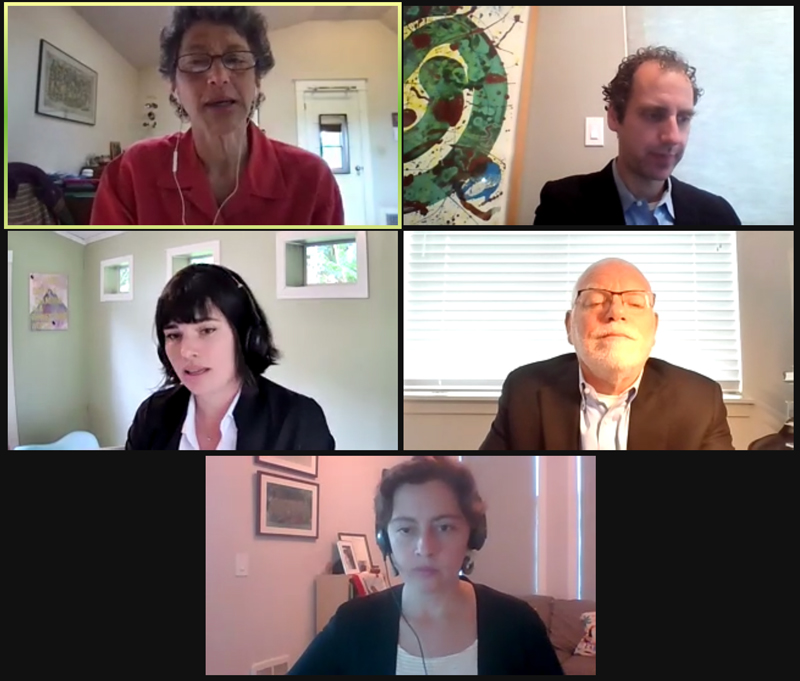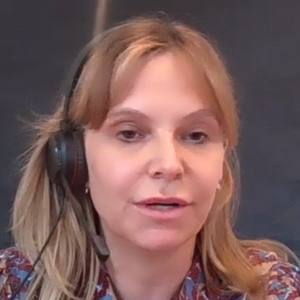On a cold day in Seattle, natural gas accounts for about two-thirds of the city’s energy consumption, Puget Sound Energy CEO Mary Kipp told listeners dialing into the NW Energy Coalition’s virtual Clean & Affordable Energy Conference.
Kipp was highlighting the key role natural gas plays in heating homes and businesses in the Pacific Northwest — and the challenge of fully weaning Washington off the gas system as it moves to decarbonize its economy by 2050.
As a mixed utility with about 1.1 million electric and 900,000 gas customers in the Seattle suburbs, PSE has a financial interest in preserving both of its business lines as it prepares to meet the state’s greenhouse gas targets.
Citing the difficulty of building enough transmission to tap the state’s “big renewable resources” located on the other side of the Cascade Range, Kipp said PSE must “think about the infrastructure we have to decarbonize as quickly as possible.”
That includes the company’s extensive natural gas pipeline network.
“My goal is to do what we can to decarbonize our pipes, and the value is the pipe network — it’s not what flows through it,” Kipp said. “We are neutral to what flows through it. You know, it’s natural gas today, but hopefully it’s going to be more RNG [renewable natural gas] and then likely hydrogen in the future.”
“I’m tasked with doing a study, and I don’t want to prejudge what’s going to come out of that study, but my first observations are, boy, this decarbonization of the gas system is going to be very hard,” David Danner, chair of the Washington Utilities and Transportation Commission, said later during a panel discussion on the regulatory barriers to decarbonizing the gas system.
Danner called electrification a “proven technology” for decarbonization, but he acknowledged that the electrification process is fraught with its own challenges, such as stranded costs, job disruption, resource adequacy issues and — as Kipp noted — the hurdle of developing new transmission lines to tap zero-emissions resources.
“And then you’ve got equity issues, because … when you have a transition, if you’re going to electrify, it’s going to be the more well-off people who are going to be able to get heat pumps and electric ranges in their homes before lower-income people,” who will see their rates increase as they’re forced pay for the system “going forward,” Danner said.
But many questions still linger around the technologies that promise to decarbonize the gas system, such as green hydrogen, carbon capture and RNG, he said.
“When will they be available? And in what quantities? Are they really going to make a material difference in carbon reductions? And the jury, I think, is still out on that. We’re going to have to see,” Danner said.
Also speaking on the panel, Mary Moerlins, director of environmental policy and corporate responsibility with Portland, Ore.-based gas provider NW Natural, likened reliance on one type of energy source to historical “agricultural foibles” of societies depending on monocrops. Moerlins pointed to her own circumstance this past winter when she was one of more than 1 million Oregon residents who lost power for multiple days after a series of ice storms swept the state, downing thousands of distribution lines and taking out substations. (See PGE Execs Contrite over Feb. Outage Communications.)
“I know I spent seven days sans electricity and really appreciated having a gas stove and a gas fireplace. And that’s not to say that everyone’s going to have that other fuel, but it begs the question of should we ever rely on one resource to answer all our energy needs,” she said.
“Yes, field diversity [in agriculture] is important, and redundancy to a certain extent is too, but we need to keep in mind when we’re talking about redundancy in terms of infrastructure, we’re talking about having two very expensive systems at the same time,” said Alejandra Mejia Cunningham, building decarbonization advocate with the Natural Resources Defense Council.
While Mejia Cunningham advocated for industry stakeholders to have discussions about fuel diversity and “backup options,” she also called for a reduction in the volume of expensive infrastructure needed to serve energy customers because all that equipment will need to be hardened and made resilient in the face of weather events.
“Do we need to have everything? Or do we need, in some cases, a different way to think about what that backup fuel is and how it’s delivered?” she said.
New Look at Cost Recovery
NWEC Executive Director Nancy Hirsh, the panel’s moderator, asked how the utility regulatory model could be modernized to focus on performance-based measures that contribute to the affordability of decarbonization and to supporting community energy service goals while still addressing cost recovery and safety issues.
“I think one of the biggest things that can be done from a regulatory perspective is recognizing that we have to figure out ways of honoring the promises of the past with the existing infrastructure differently than new investments going forward,” said Michael Colvin, the Environmental Defense Fund’s director of regulatory and legislative affairs.
Colvin said regulators need to establish a “bright line” between cost recovery for present-day and future investments “because we’re still going to need a gas system, even in the 2045 time frame … that is going to look very different than what we have today.”
“Who are the customer segments that we are going to be serving with that gas system? What are their needs? And how do we invest for them?” he said.

Colvin said hydrogen might be needed for parts of the economy that will be difficult to electrify. And in California, he said, gas-fired generators are currently one of the largest end-users of gas. In the future, they will still need gas but won’t be running at a steady state, instead required to perform more ramping.
“The gas system in California was never designed to move gas around that quickly and that sporadically. It was always sort of designed to have that steady state, with maybe a little bit of pressure up and pressure down,” Colvin said.
A change in usage patterns will require new investments in the gas system to help supply those generators. “That’s going to require new recovery just from the gas generators,” he said.
“I just wanted to point that I don’t think that putting hydrogen through a generator is necessarily the highest and best use of that product. But I do also realize we need dispatchable energy. So where is the right use for that?” Moerlins said. “I would argue that there are a lot of really good near-term uses for carbon-free gases on the pipeline delivery system for a distribution company to deliver for direct use. … I think in furnaces, hydrogen and RNG makes sense today.”
Danner said future ratemaking will require “a lot of discussion and dialogue.” A recently passed Washington law (SB 5295) requires the state’s gas and electric utilities to file multiyear rate plans that incorporate performance-based ratemaking. The UTC shouldn’t “prescribe” what will be included in those plans, he said.
“What I envision is that this is going to be determined in our proceedings, that the utilities are going to file a plan with us,” he said. The commission will then hear from all intervenors, the public and stakeholders. “And I envision standards that are going to address energy efficiency, safety outages, consumer satisfaction, compliance with billing and customer service rules.
“And so it involves basically setting priorities and then setting baselines or targets for what is acceptable, and then providing incentives for going beyond or penalties for failures to meeting those targets. But I think it’s all going to be part of a large discussion. We’re doing this for the first time, really, in a big way. And I’m very excited to see what we get. I think that there can be a lot of innovation in the performance-based ratemaking world.”



